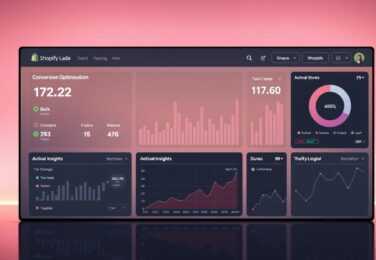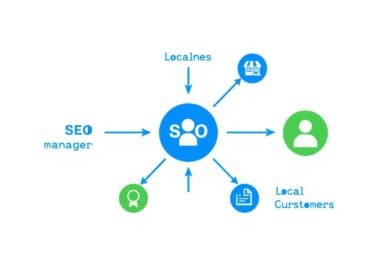How data can help you to improve website engagement

Table of Content
Ever wondered why some websites grab your attention right away, while others don’t? It’s often because they know how to use data well. In today’s digital world, using data analysis to make the user experience better is key.
Navigating a bad website can be really frustrating. But what if you could make your website better with exact data? By watching how users interact and analysing their behaviour, businesses can find new ways to get more people involved. Let’s explore how these insights can change your online space, making it more meaningful for your visitors.
Key Takeaways
- Data analysis is crucial for improving website engagement.
- Understanding user interactions helps refine user experience.
- Accurate data can replace guesswork with strategic decisions.
- Enhanced digital experiences are achievable through insightful analytics.
- Meaningful online encounters drive better engagement and user satisfaction.
The Importance of Understanding Website Engagement
Knowing how to measure website engagement is key to digital success. It shows how well users interact with a website. Users who are engaged don’t just visit; they interact with the content through clicks, comments, and more.
Defining Website Engagement
Website engagement measures how users interact with a site. It’s more than just page views. For example, if users spend more time on a site, it means they find the content valuable. This is important for building a loyal audience and turning visitors into customers.
Key Metrics to Measure Engagement
There are several important metrics for measuring website engagement:
- Session Duration: This shows how long users stay on the site. Longer times mean better engagement.
- Bounce Rate: This tells us the percentage of visitors who leave after seeing just one page. A lower bounce rate means users are interested in exploring more.
- Pages Per Session: This measures the average number of pages viewed in one session. More pages viewed means deeper engagement.
- Conversion Rate: This metric is often used for sales, but it can also show the quality of user interaction, like newsletter sign-ups.
| Metric | Description | Ideal Outcome |
|---|---|---|
| Session Duration | Average time users spend on the site | Longer times |
| Bounce Rate | Percentage of single-page sessions | Lower percentages |
| Pages Per Session | Average number of pages viewed in a session | Higher numbers |
| Conversion Rate | Percentage of goal completions | Higher percentages |
Leveraging Analytics Tools for Better Insights
Analytics tools are key for getting data insights on how your website performs. They give you a detailed look at who visits your site and how they behave. This helps businesses improve their strategies and make their websites more engaging.
Top Analytics Tools to Consider
For traffic analysis, some tools really stand out. Google Analytics is a top choice for many businesses:
- Google Analytics: Gives deep insights into traffic and user data.
- Adobe Analytics: Offers advanced segmentation and real-time data.
- Mixpanel: Tracks user interactions and engagement metrics.
- Hotjar: Uses heatmaps and user feedback to improve the user experience.
How to Set Up and Use Analytics Tools Effectively
Setting up and using these tools well is crucial. Here’s how to start:
- Installation: Start by adding the tracking code to your website’s codebase.
- Goal Setting: Set specific goals and events you want to track, like conversions or user actions.
- Custom Reporting: Create custom reports that match your business goals, giving you focused data insights.
- Regular Analysis: Regularly check your traffic patterns to make smart, data-driven decisions that boost user engagement.
Getting good at using tools like Google Analytics is not just about traffic analysis. It’s about making your strategies better and more targeted. By always checking and adjusting based on these insights, you keep your strategies sharp and effective.
Data Trends That Impact User Behaviour
It’s key to keep up with data trends to stay ahead. We’ll look at current trends in user data and predictive analysis. This will help organisations predict future user behaviour.
Current Trends in User Data
Knowing the latest data trends is vital for businesses. They want to boost user engagement. Here are some major trends:
- Personalised content delivery: Tailoring content based on user behaviour and preferences is becoming standard practice.
- Responsive design: Ensuring websites adapt seamlessly to different devices improves user experiences and retention.
- Real-time analytics: Leveraging real-time data allows for immediate responses to emerging patterns.
Predictive Analysis Using Data Trends
Using predictive analysis to understand user behaviour involves several methods:
- Machine learning: Employing machine learning algorithms helps in identifying and forecasting patterns within massive datasets.
- Historical data: Analysing past user interactions provides a foundation to predict future engagement.
- Segmentation: Categorising users based on behaviour and demographics enhances targeted marketing strategies.
By mixing machine learning with current data trends, businesses can meet user needs ahead of time. This leads to a more personal and engaging user experience.
Using Data Visualisation to Understand User Interaction
Understanding user interaction is easier with data visualisation. Tools like Google Analytics, Tableau, and Power BI turn complex data into clear graphs and charts. These visuals help businesses see what their audience likes.
- Identify the most engaging pathways and content.
- Visualise user flow to understand navigation patterns.
- Detect and rectify potential experience breakpoints.
User engagement analytics show where users struggle. This lets businesses fix problems quickly. A good graph or chart helps strategists improve the user experience.
Here’s a quick look at some popular data visualisation tools:
| Tool | Features | Best For |
|---|---|---|
| Google Analytics | Real-time data, Custom dashboards, User demographic insights | Standard web analytics |
| Tableau | Interactive dashboards, Comprehensive data source connections | In-depth data analysis |
| Power BI | Integrated with Microsoft services, Advanced analytics and reporting | Business intelligence |
Using data visualisation tools helps us understand user interaction better. It makes websites more engaging and user-friendly. With user engagement analytics, businesses can make sure every website interaction is great for users.
Personalising User Experience Through Data Insights
Personalisation makes the user experience better. It involves customising content and paths for each user. This makes the site more relevant and engaging. It also boosts customer happiness and keeps them coming back.
The Role of Personalisation in User Engagement
Personalising the user experience is crucial for keeping visitors interested. It includes:
- Dynamic content adjustment: showing content that matches the user’s likes and actions.
- Targeted marketing: sending ads that are just right for certain groups of users.
- Recommendation engines: suggesting items or content based on what users have looked at before.
These methods have proven to increase user interest and loyalty. Many case studies support this.
Case Studies of Personalised Websites
Big names like Amazon and Netflix have used personalisation to get great results. Here are some examples:
| Company | Personalisation Strategy | Outcome |
|---|---|---|
| Amazon | Personalised product recommendations based on browsing history and purchases | Significant increase in customer satisfaction and sales conversion rates |
| Netflix | Tailored content suggestions using advanced algorithms | Enhanced user retention and viewing time |
Data-Driven Decisions to Enhance Website Design
Data-driven decisions can really boost a website’s layout and navigation. By looking at how users interact, designers can spot what works and what doesn’t. This helps make better choices about layout and improves navigation.

Using Data to Determine Layout and Navigation
Knowing how users interact with your site is key. Data like click rates and heat-maps shows where to put important stuff. This makes sure key actions are easy to find.
Navigation should be smooth. Data helps us find the best paths for users. This makes finding what they need fast and easy.
User Testing and Feedback Integration
User feedback is vital for better design. Testing with users gives us real-time feedback. This, combined with data, helps us fix any issues.
This back-and-forth of testing and tweaking makes sites easier to use. It leads to designs that are more intuitive and friendly.
| Data Source | Usage | Outcome |
|---|---|---|
| Heatmaps | Determine where users click most | Improved placement of CTAs |
| Scroll Depth | Identify content engagement levels | Optimised content length |
| User Feedback | Gather opinions on usability | Refined navigation paths |
Big Data Analytics for Understanding User Preferences
Big data analytics are key in figuring out user preferences and habits. They help us find hidden patterns and insights in huge data sets. This guides us to make content personalisation more effective. We can then tailor experiences to fit each user’s unique taste.
- It helps spot trends and changes in user behaviour.
- It makes marketing more targeted.
- It improves how users feel and interact with content.
- It gives us solid data for making decisions.
One big plus of big data analytics is how it helps with content personalisation. By looking at user data, we can see what content people like most. This makes users happier and more likely to stick around.
| Feature | Benefit |
|---|---|
| User Behaviour Analysis | Helps us understand what each user likes |
| Targeted Marketing | Makes ads more effective with content that fits |
| User Experience Enhancements | Makes interactions more personal and engaging |
| Data-Driven Insights | Supports smart decisions with solid data |
In today’s fast-paced market, being quick to adapt is crucial. Big data analytics lets us keep up by refining our plans with precise insights. This way, we meet user needs better and stay ahead in the game.
The Role of Data Management in Website Performance
Effective data management is key to improving website performance. A good data management strategy makes sure data is accurate, follows rules, and is used wisely. This makes the customer journey better and meets legal data privacy rules.

Building a Robust Data Management Strategy
A solid data management strategy starts with clear goals and knowing the data’s life cycle. It includes:
- Data Collection: Make sure data is collected accurately and fully.
- Data Storage: Use safe and growing storage options.
- Data Maintenance: Keep data up-to-date and clean to keep its quality.
- Data Governance: Create rules for who can access and use data.
The Benefits of Efficient Data Management
Good data management brings big benefits. Some of these are:
- Improved Website Performance: Websites load faster and users have better experiences.
- Better Decision-Making: Decision-makers get easier access to useful data.
- Enhanced Data Governance: Follows legal rules and protects data privacy.
- Customer Journey Optimisation: Makes experiences better based on detailed data insights.
Analytics and Data: Best Practices for Improved Engagement
To make the most of data-driven marketing, following best practices is key. We need to set clear goals, collect data consistently, and value data-driven decisions.
SEMrush and Google Analytics provide strong analytics strategies for different business needs. By using these, we can match our actions with what users want, boosting engagement.
- Define clear and measurable objectives.
- Employ consistent data collection methods.
- Promote a data-driven decision-making culture.
- Regularly analyse and iterate strategies.
Good analytics helps businesses meet user needs and boosts ROI. Using data-driven marketing frameworks, we can keep improving user engagement.
| Best Practices | Benefits |
|---|---|
| Clear Objectives | Focuses efforts and resources effectively |
| Consistent Data Collection | Ensures high-quality, reliable insights |
| Data-Driven Culture | Encourages informed decision-making |
| Regular Analysis | Adapts and optimises strategies promptly |
Our aim is to use analytics strategies well and stick to best practices. This way, we keep improving engagement, making our digital platforms more interesting and keeping users coming back.
Conclusion
Understanding and improving website engagement is key. Analytics and data play a huge role in this. By using strategic insights, businesses can make user experiences better, leading to more engagement and keeping users around longer.
By combining thoughtful analysis, customisation, and design improvements, we can create experiences that really connect with our audience. This approach makes our websites more engaging and effective.
Data is more than just numbers on a website. It’s about understanding trends and using predictive analysis to improve future interactions. Tools help us see how users interact, giving us insights to make better decisions.
This cycle of analysing data, making changes, and getting feedback is at the heart of digital success. It’s about using knowledge to grow and improve. By doing this, we not only boost engagement but also build a strong, learning environment.
Let’s use our findings to make digital experiences that keep getting better. Experiences that are all about the user and truly stand out.










